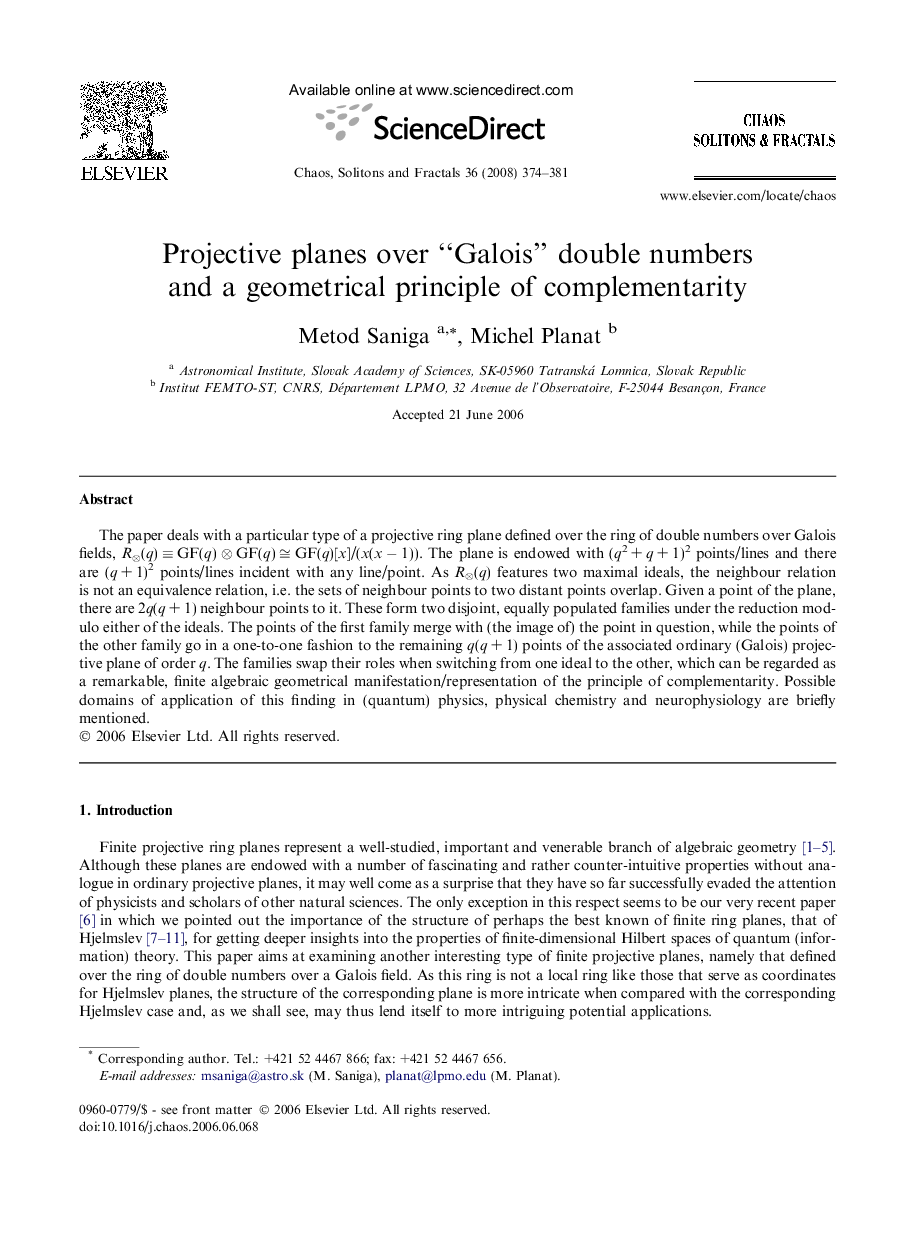| Article ID | Journal | Published Year | Pages | File Type |
|---|---|---|---|---|
| 1889808 | Chaos, Solitons & Fractals | 2008 | 8 Pages |
The paper deals with a particular type of a projective ring plane defined over the ring of double numbers over Galois fields, R⊗(q) ≡ GF(q) ⊗ GF(q) ≅ GF(q)[x]/(x(x − 1)). The plane is endowed with (q2 + q + 1)2 points/lines and there are (q + 1)2 points/lines incident with any line/point. As R⊗(q) features two maximal ideals, the neighbour relation is not an equivalence relation, i.e. the sets of neighbour points to two distant points overlap. Given a point of the plane, there are 2q(q + 1) neighbour points to it. These form two disjoint, equally populated families under the reduction modulo either of the ideals. The points of the first family merge with (the image of) the point in question, while the points of the other family go in a one-to-one fashion to the remaining q(q + 1) points of the associated ordinary (Galois) projective plane of order q. The families swap their roles when switching from one ideal to the other, which can be regarded as a remarkable, finite algebraic geometrical manifestation/representation of the principle of complementarity. Possible domains of application of this finding in (quantum) physics, physical chemistry and neurophysiology are briefly mentioned.
